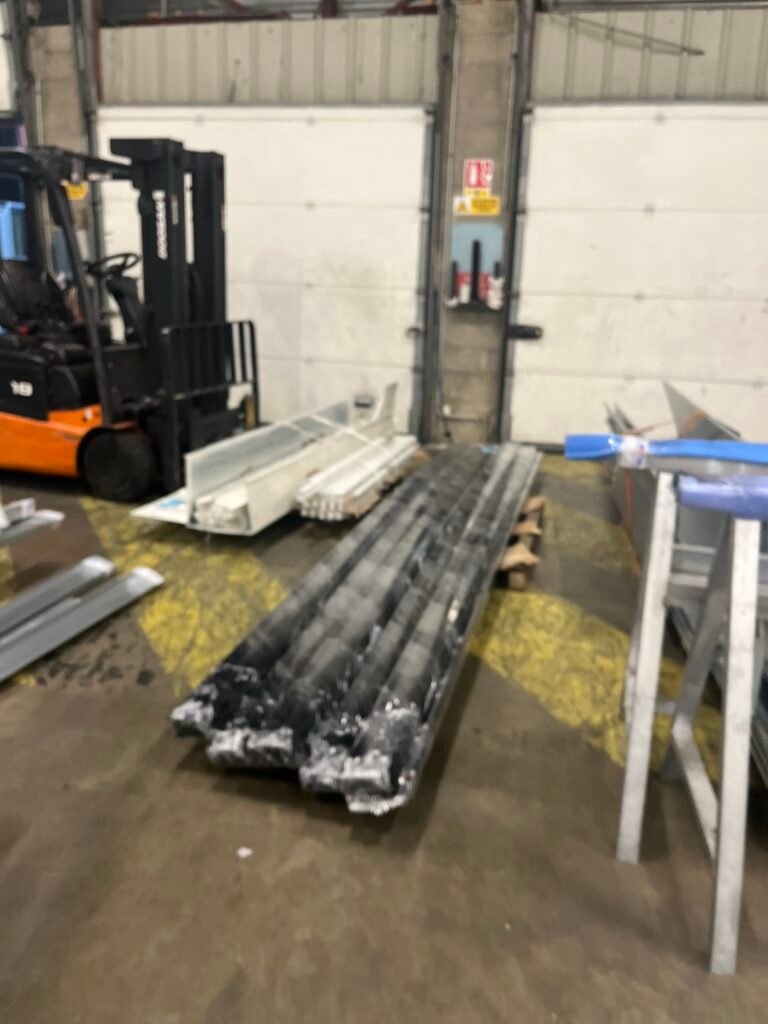The Difference Between Iron and Steel: A Comprehensive Guide
When discussing materials in construction, manufacturing, or even household tools, iron and steel often come up as key players. But what is the difference between these two essential materials? While they may seem similar at first glance, their unique properties and applications set them apart. In this article, we’ll break down the distinctions between iron and steel to help you understand their roles and uses. 🔧✨
1. What is Iron? ⚙️
Iron is a chemical element with the symbol Fe (from the Latin ferrum). It is one of the most abundant metals on Earth 🌍 and has been used by humans for thousands of years. Here are some key characteristics of iron:
Types of Iron:
- Wrought Iron:
- Nearly pure iron with a small amount of slag (impurities).
- Known for its malleability and corrosion resistance.
- Commonly used for decorative gates, railings, and furniture. 🏡⚒️
- Cast Iron:
- Contains 2-4% carbon, making it hard but brittle.
- Used for cookware, engine blocks, and heavy machinery. ☕️📺
Properties of Iron:
Iron exhibits a range of fascinating properties that make it a fundamental material in various industries. Below are its key properties:
- Abundance and Natural Occurrence: Iron is the fourth most abundant element in the Earth’s crust, often found in the form of ores like hematite and magnetite. This abundance makes it readily available and economically significant. 🌍🪨
- Malleability and Ductility: In its pure form, iron is soft and can be hammered or stretched into thin sheets or wires, making it suitable for shaping and forming. This property is particularly evident in wrought iron. 🔨✨
- Magnetic Properties: Iron is ferromagnetic, meaning it can be magnetized. This property is crucial in the manufacturing of electric motors, transformers, and other electromagnetic devices. 🧲⚙️
- High Melting Point: With a melting point of around 1,538°C (2,800°F), iron is suitable for high-temperature applications and acts as a base for creating heat-resistant alloys. 🔥⚙️
- Reactivity with Oxygen and Moisture: Iron readily reacts with oxygen and water to form iron oxide, commonly known as rust. While this is a drawback for durability, it has led to the development of protective coatings and treatments to enhance its lifespan. 🌧️⚖️
- Base for Alloys: Iron serves as a foundational metal for numerous alloys, most notably steel. By adding elements like carbon, manganese, and nickel, the properties of iron can be significantly altered and improved. ⚒️✨
Element Information, Properties and Uses:
Iron is a crucial element not only because of its abundance but also due to its versatility. It is used in the production of everything from basic construction materials to sophisticated industrial machinery. Its magnetic and structural properties make it indispensable in modern technology and infrastructure. Iron compounds, such as iron oxides, also play a role in pigmentation and biochemical processes. 🌈🔧
How Iron is Made:
Iron is extracted from iron ore through smelting in a blast furnace. The process involves heating the ore with coke and limestone, which removes impurities and produces molten iron. 🔥⚖️
2. What is Steel? ⚖️✨
Steel is an alloy primarily made of iron and carbon. The carbon content in steel is usually between 0.02% and 2.14%, with other elements like manganese, chromium, and nickel often added to enhance its properties. Steel has revolutionized industries due to its versatility and strength. 🚀⚙️
Types of Steel:
- Carbon Steel:
- Contains varying amounts of carbon (low, medium, or high).
- Used in construction, tools, and automotive parts. 🛠️🏎️
- Stainless Steel:
- Contains chromium for corrosion resistance.
- Commonly used in cutlery, medical instruments, and kitchen appliances. ✨🔧☕️
- Tool Steel:
- Designed for durability and heat resistance.
- Used in making tools and dies. ⚒️✨
Properties of Steel:
- Stronger and harder than pure iron. ⚖️
- More resistant to wear and deformation. 💪
- Can be rust-resistant, depending on its composition (e.g., stainless steel). ✨
How Steel is Made:
Steel production involves refining molten iron and adding precise amounts of carbon and alloying elements. Common processes include the Basic Oxygen Furnace (BOF) and Electric Arc Furnace (EAF) methods. 🎡⚙️
3. Key Differences Between Iron and Steel 🔧
| Feature | Iron | Steel |
|---|---|---|
| Composition | Pure metal or alloy with higher carbon in cast iron. | Alloy of iron and carbon (0.02%-2.14%), with other elements. |
| Strength | Relatively soft in pure form. | Stronger and more durable. |
| Corrosion Resistance | Prone to rust without treatment. | More corrosion-resistant (e.g., stainless steel). |
| Applications | Decorative items, cookware, and heavy machinery. | Construction, tools, automotive, and appliances. |
| Flexibility | Limited versatility. | Highly versatile with tailored properties. |
4. Applications: Choosing Between Iron and Steel ⛏️⚒️
When to Use Iron:
- Decorative Items: Wrought iron’s malleability makes it ideal for gates, fences, and furniture. 🏡⚒️
- Heavy-Duty Components: Cast iron is preferred for items requiring compressive strength, like engine blocks and pipes. 🎪
When to Use Steel:
- Construction: Steel beams and reinforcement bars are staples in modern architecture. 🏛️⚖️
- Tools and Machinery: Tool steel is indispensable for making durable and heat-resistant equipment. ⚙️✨
- Everyday Items: Stainless steel is a favorite for its aesthetic appeal and rust resistance, seen in cutlery, appliances, and medical instruments. ✨⚙️
5. Why is Steel More Popular Than Iron? 🔧✨
While iron is essential as a base metal, steel has become more popular due to its enhanced properties. Steel’s strength, versatility, and resistance to wear make it indispensable in various industries. Additionally, modern advancements in steel production allow for precise tailoring of its properties to suit specific needs. 🏛️⚙️
Conclusion 🎉✨
Understanding the difference between iron and steel is crucial for choosing the right material for your project. While iron has its unique applications and historical significance, steel’s superior strength, durability, and versatility make it the material of choice for most industries today. Whether you’re building skyscrapers or crafting tools, knowing these distinctions will help you make informed decisions. 💪⚙️
If you found this guide helpful, share it with others or leave a comment below! Have questions about other materials? Let us know, and we’ll cover them in a future article. ✨⚒️


